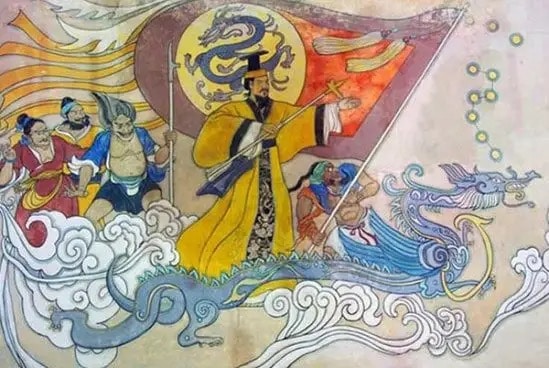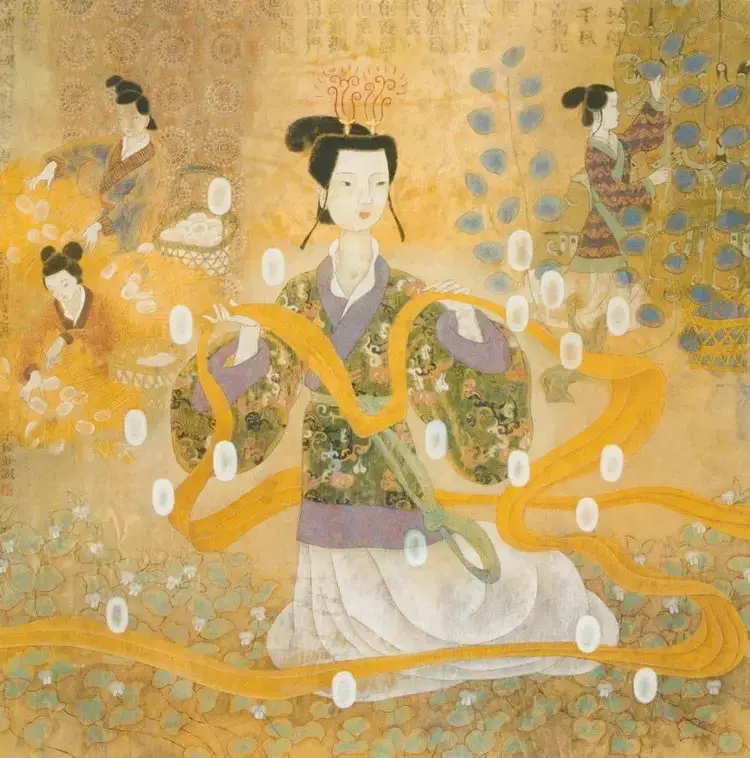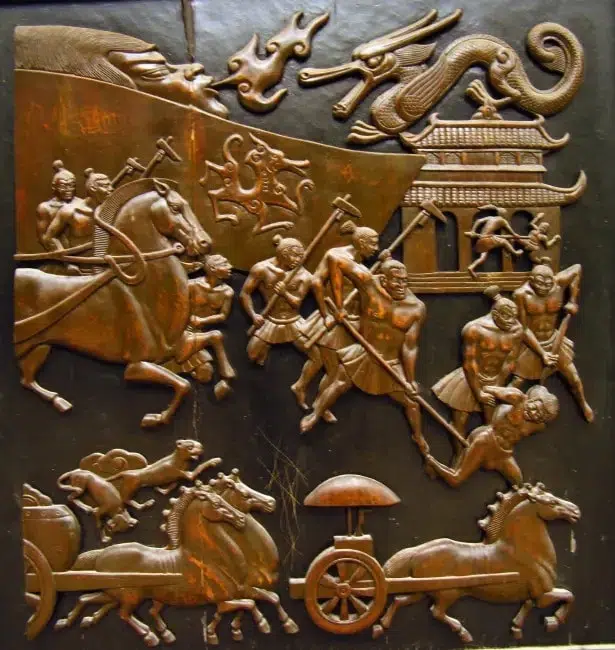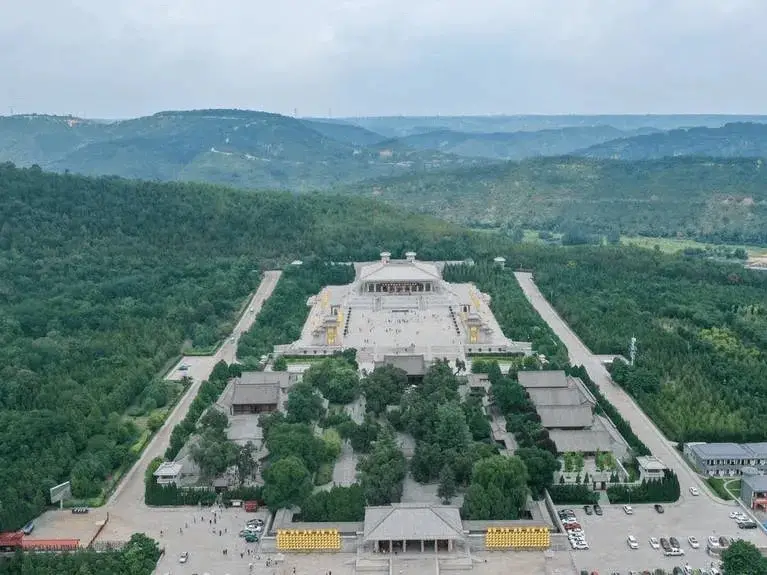The Yellow Emperor, also known as the Yellow Thearch is recorded in Chinese history as a deity. He was a representation of rain and lessons drawn from him is that controlling the heart from within brings order outside. Teaching against over excitement and hurry in making life decisions or attempting to salvage delf from any hurdle. The Xuanyuan Huangdi, the Yellow Emperor is written about in Chinese chronicles and, what better way is there to discover fascinating facts about this Yellow Emperor than to ask ourselves a few questions related to him.
What is the yellow emperor?

The Yellow Emperor is a deity in the Chinese religion. His Chinese name is Huangdi is portrayed as the pioneer of the centralize state as a ruler and patron of esoteric arts. The Yellow Emperor is included in the list of the three legendary Chinese sovereigns. He is known for invention of weapons as well as garments for both the upper body and the lower body. Historians credits the Yellow Emperor for the establishment of houses and palaces. The Yellow Emperor was apparently a fruit of an extra ordinary birth. Thy myth states that his mother Fubao conceived him of the lighting while she was walking in the country aroused. She later delivered him on the mount of Xuanyan or mount Shou. The Yellow Emperor is a symbol of the center of the universe and vision of unity which holds the four directions of the universe. The symbol teaches that controlling the heart within brings absolute order outside. It is alleged that the Yellow Emperor reduced himself, abandoning emotions during the three years refuge on Mount Bowang in order to rediscover himself. Several sovereign dynasties were claimed to have originated from the Yellow Emperor according to history.
When did the yellow emperor live?
The Yellow Emperor was allegedly born in 2704 BC. According to the calculations of the Jesuit missionaries who studied the Chinese chronicles to establish the time that Yellow Emperor lived, His reign and existence is placed to be 2697-2597 or 2698-2598. This calculation was approved and adopted by the 20th century promoters of the universal calendar.
Where did the Yellow Emperor live?
The Yellow Emperor is said to have been the leader of the Yioxiong clan that lived near the today’s Xinzheng in Henan according to Willian Nienhauser who works as a translator of the Grand Historian records.
Yellow Emperor’s wife

The wife of Yellow Emperor was known as Xi Ling-Shi. She is credited in the Chinese culture to have discovered the sericulture and for the invention of silk loom in the 27th century BC. Leizu, (her other name) is believed to have been having an afternoon tea when a cocoon fell into her tea. The cocoon got unraveled by the heat in her tea and the unwrapped silk all through her garden. She realized that the small cocoon was the origin of the silk. This is not the whole story, however. Other accounts places Lezu, sitting on her farm while having an afternoon tea. She had in her hands some cocoons and when one of them fell into the tea, a fine thread separated itself from the silkworm cocoon. She tried to unwind it around her finger and to her amazement, it was beautiful. It is not certain which of the accounts is true or even if any is, but one sure thing is that the use of silk began in China.
When did the Yellow Emperor rule?
Huangdi, the Yellow Emperor according to historian, ruled from 2697. He is credited as a legend who got the leadership overall the tribes in the Yellow River by waging a war and defeating the barbarians. He set up governmental institutions and introduced the use of coins as money. The reign of Huangdi is described as the golden age. He accomplished his dream of having an ideal kingdom of peace, love and harmony with the natural law and had the virtues that were upheld by early Daoism.
Why was the yellow Emperor called Yellow Emperor?
According to Yang Kuan who was a member of the Doubting Antiquity School, huang meaning yellow was a Chinese character for “August” or was a name used to avoid naming taboo.
Yang’s view did not go uncriticized. Other scholars for example Mark Edward Lewis claim that the name Huang in Huangdi originally meant rainmaking. Huangdi therefore was a representation of the power of rain while Chiyou stood for fire and drought.
Was the Yellow Emperor real?
The Yellow Emperor, like all other ancient sages’ existence started to be questioned in the 1920s. Historians such as Gu Jiegang reasoned that these were myths because the ancient sages were fist of all depicted as gods then later on the story changed and they were described as human. According to Yang Kuan, Yellow Emperor was first described as the ruler of China during the period of the Warring States. He argued that Huangdi might have been a later transformation of Shanghai who is the supreme god of the Shang dynasty.
It is now agreed by majority of historians that the Yellow Emperor was not actually real but was originally a god that was later represented as a historical person and the leader of China.
Chiyou Yellow Emperor

Chiyou is reported in the ancient China mythology as the one who lost against Yellow Emperor. He was the tribal leader of the Nine Li tribe. His ancestry is controversial as he may fall under, Miao, Dongy or man. Chiyous is regarded now and worshipped as the god of war and one of the three founders of China.
How did the Yellow Emperor die?
The Yellow Emperor, after living for more than a hundred years is said to have met a phoenix, which is mythological bird that reigned over all birds and the qilin, a chimeral creature in the Chinese mythology and died. He was buried in the Mausoleum of the Yellow Emperor. Other tombs were however built in Hebei, Henan and Gansu.
Yellow Emperor tomb

The tomb of the Yellow Emperor is alleged to be the mausoleum of the Yellow Emperor that is located in the Yan’an City of the Shaanxi province in China.
It is alleged that the Yellow Emperor attained immortality and rose to heaven, leaving only his clothing. This mausoleum was originally called” Qiao Tomb” and served as an important sight for emperors gave offerings to the Yellow Emperor after his death. The first offering given in the mausoleum was 442BC. Later on, the whole nation revered this tomb as the place of sacrifices. To this end, it has been refurbished and rebuilt several times, even in 1993. A mausoleum foundation was started that later ended in 2004. to raise money for the reconstruction process. There is a sign inscribed a” Horse-Dismounting Stone “on the right of the stone path leading to the tomb that,” Wen and Wu and their officials arrived at this point and dismounted their horses”.
The tomb mausoleum now measures 3.6 meters in height, 48 minutes circumference and has an edge of brick wall all surrounding it. The south side
Yellow Emperor and flame emperor
The Yellow Emperor and his brother the Flame Emperor engaged in a war. As earlier described, Yellow Emperor represented rainfall while his brother represented fire and drought. The Yellow Emperor, the older of the two brothers followed the way but the flame Emperor refused to obey. Both of them had their own territory that were equal, but greed drove each of them to want the other half and have full control. Just like the brotherhood battles depicted in other myths like Cain and Abel, this motif of dual supremacy fits the paradigm of binary opposition. Fire and water, which either of the two brothers represent, are, in the physical world enemies that are always antithetical. The battles are in the form of four readings and describes the long-lasting war that finally came to a halt when the Yellow Emperor representing water, managed to capture the Flame Emperor.
Yellow Emperor vs Jade Emperor
Jade Emperor, known as the heavenly grandfather unlike the Yellow Emperor is discussed as more of a deity. He ruled the Earth and Heaven justly and wisely but never had the time to visit earth. It is alleged that the Jade Emperor was present in the creation of the world and was the head of pantheon. There are several myths that attempts to illustrate how the creation might have happened, one states that the Jade Emperor fashioned the human beings, left them to dry and were rained on and picked up deformities that explain the origin of human sickness.
Conclusion
The Yellow Emperor might be only mythical and unreal is depicted by the absence of some historical evidence to support his existence, but so is the case for many other religions who might not be able to fully explain their origin and destiny. One important thing however is that there are lessons that are derived from these mythologies. From the Chinese Yellow Emperor, two lessons that stand out are the need for harmonious existence in respect to the natural law and that the way to win is to control the heart from within in order to have order outside.
